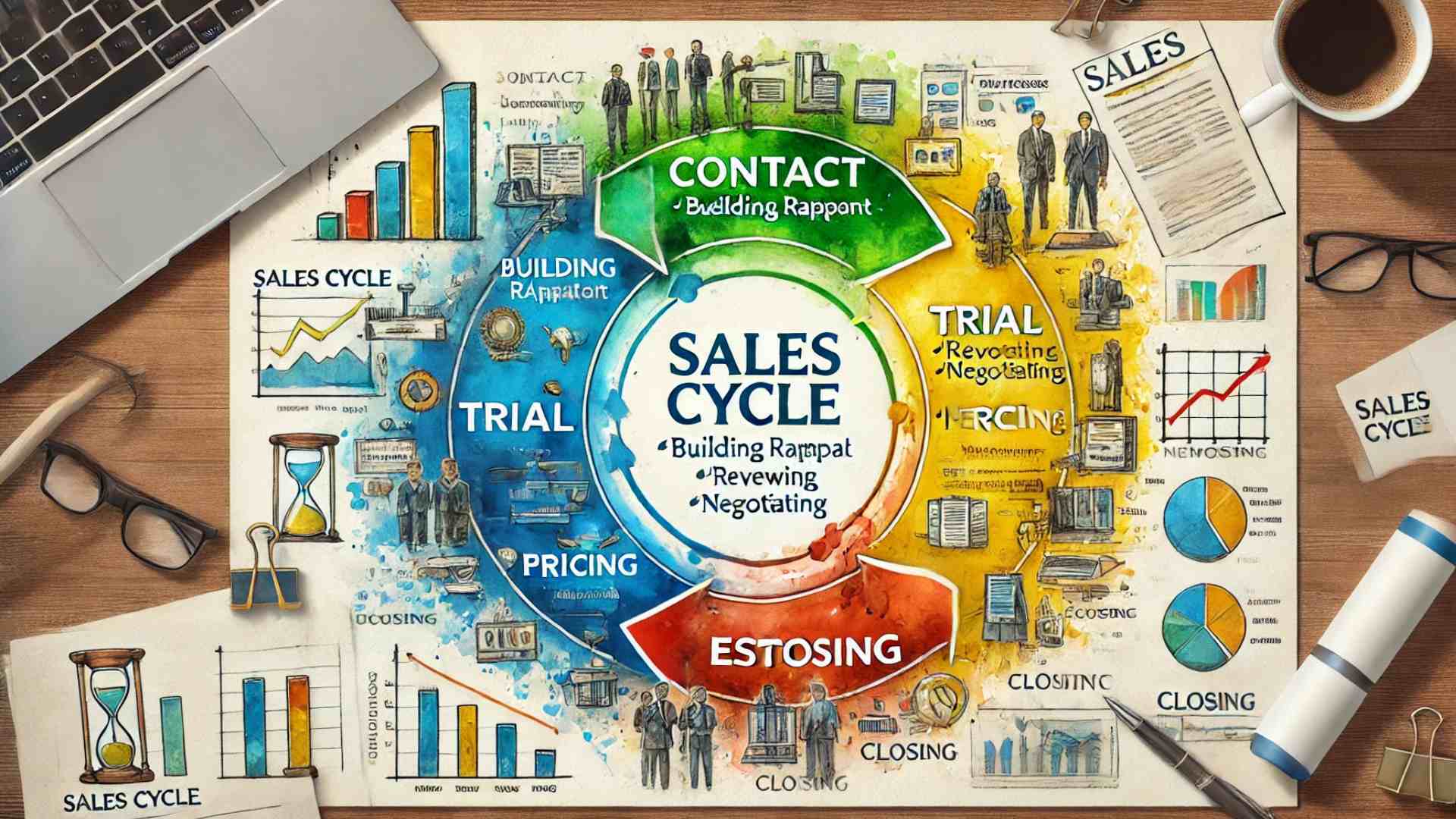
In the world of SaaS sales, it’s crucial to understand the phases of the sales cycle and how to navigate each step efficiently. This understanding is what separates a fast, seamless sales process from one that drags on unnecessarily.
Each stage requires a distinct strategy, from building rapport with your contacts to negotiating and closing the deal. This blog post will break down the four key stages—Contact, Trial, Pricing, and Offer —and help you understand how to master each one for faster deal closure.
1. Contact: Building Rapport
The first step in any sales cycle is initiating contact and building a relationship with your potential buyer. This is the stage where trust is developed. If done right, it sets the foundation for the rest of the sales process.
Here’s what you need to focus on:
- Datasheets: Share concise, informative documents that outline the features and benefits of your SaaS solution.
- Quick Demos: A quick, high-level demonstration can help your potential client visualize how your solution fits into their needs.
- Whitepapers: Provide detailed reports or guides that offer a deep dive into the value of your solution, specifically tailored to your customer’s industry.
At this point, your goal is to be seen as a trusted advisor rather than a salesperson. The more value you offer during this phase, the more smoothly the rest of the cycle will go.
Pro Tip: Personalize your communication with relevant data and examples that resonate with the specific pain points of your prospect. Every piece of content you provide should address a problem they are trying to solve.
2. Trial: Reviewing
Once you’ve built enough rapport, it’s time to move into the trial phase. This is where your prospect starts to seriously evaluate your solution. The aim is to offer them a hands-on experience of how your software fits their business needs.
During the trial phase, you’ll need:
- Feature Matrix: Provide a detailed breakdown of your product’s features and how they stack up against competitors. This is especially important when dealing with SaaS products in competitive markets.
- Knowledge Base: Make sure the process of starting the trial is as smooth as possible. Provide easy-to-follow guides to ensure your product is used and integrated with minimal effort.
- Technical Documentation: Offer resources that answer more technical questions to ensure your product’s full capabilities are understood.
This is the moment of truth for your SaaS solution. If your prospect encounters friction here—whether in setup or functionality—you risk losing the sale. Make sure your team is available to offer support, address concerns, and guide them through the trial.
Pro Tip: Don’t just hand off the trial and hope for the best. Proactively engage with your prospect during this phase. Monitor their usage and be ready to address any questions or challenges they face.
3. Pricing: Negotiating
By now, your prospect is hopefully excited about the product and sees its value. But now comes the tricky part—pricing. This is where things can get tense as both sides negotiate terms that work for them. Here’s what you need to focus on:
- Competitor Analysis: Show how your pricing is competitive in the market and why your solution offers more value for the price.
- ROI Justification: Prepare financial justifications to make your pricing seem like an investment rather than a cost. Customized ROI calculators can work wonders here.
- Feedback Loop: Gather feedback from your prospect to understand their hesitations and tailor your pricing structure accordingly. Sometimes flexibility can be key to sealing the deal.
At this stage, negotiations may become more detailed, especially if the Purse Holder is involved. Being well-prepared with market insights, pricing models, and case studies can help you tip the scale in your favor.
Pro Tip: Consider offering limited-time discounts or package deals to push hesitant prospects over the line. But make sure not to undervalue your product—always justify why the price is worth it.
4. Offer: Closing
The final stage is where you close the deal. At this point, both sides have (hopefully) agreed on the terms, and now it’s all about making things official.
Here’s what you need to focus on:
- Business Justifiers: Provide any final documentation or testimonials that highlight how your SaaS solution has worked for similar businesses. These serve as reassurance for decision-makers who might still have doubts.
- ROI Calculators: If the Purse Holder needs extra motivation, offer a final breakdown of the financial gains your solution offers.
- Success Stories: Share detailed case studies from companies similar to your prospect that illustrate the tangible benefits they can expect.
The closing stage can be nerve-wracking, especially if the deal involves multiple decision-makers. The key is to remain patient while gently guiding your prospect toward signing the contract.
Pro Tip: Don’t wait for your prospect to ask for the final paperwork. Be proactive by sending a detailed, easy-to-sign proposal that addresses all key points of negotiation.
Wrapping It Up
Understanding and mastering these four phases of the SaaS sales cycle—Contact, Trial, Pricing, and Estimate—will not only help you close deals faster but also improve your win rates.
Each phase requires a different approach and strategy. The trick is knowing when to push forward and when to step back. Tailor your communications, offer the right resources, and always be prepared to negotiate when the time comes.
By visualizing the sales cycle and recognizing what each phase entails, you can navigate your sales process like a pro and increase your SaaS business’s growth potential.
Startup Hub